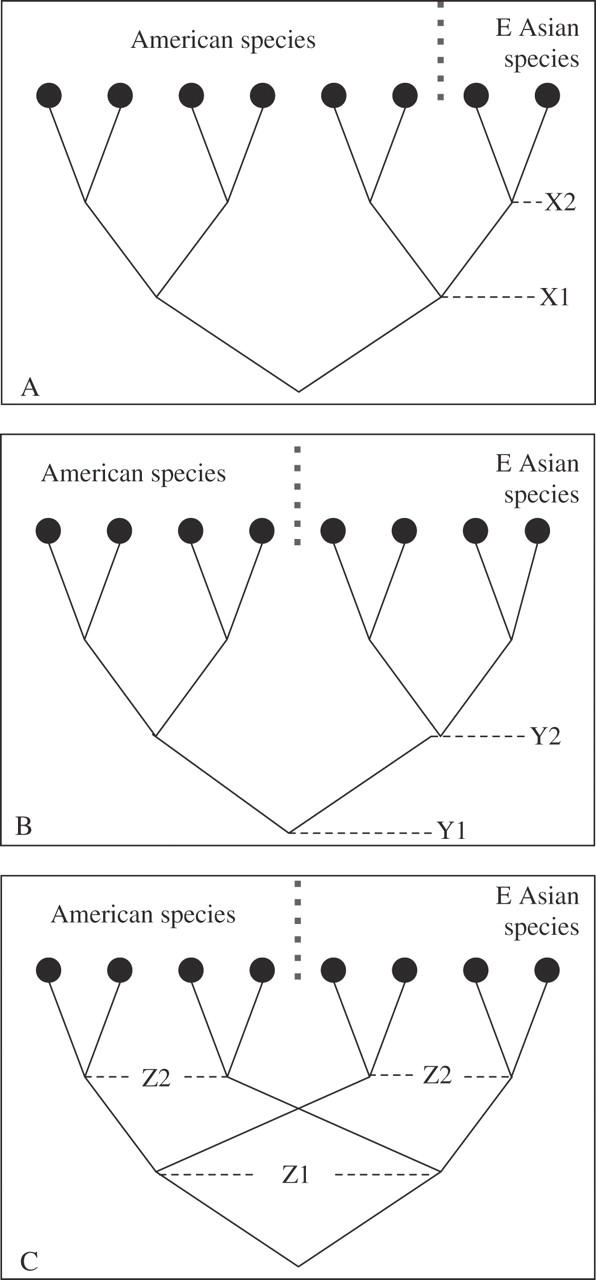Fig. 3.

Patterns of haplotype relationships within a disjunct species pair, and what can be interpreted from them. (A) Paraphyly, i.e. one species' haplotypes derived from within a clade of the other's, indicates that the American species existed first, and that the E Asian species was derived from it between points X1 and X2. This pattern fits a hypothesis that the Asian species was founded by long dispersal. (B) Reciprocal monophyly, indicating divergence at point Y1. This pattern is consistent with vicariance between points Y1 and Y2, but does not exclude long dispersal, as it could be derived from pattern A by loss of the clade on the left. (C) Two clades of haplotypes shared between both species, strongly indicates that the two species were derived from a single large population that contained two or more widespread haplotypes, and so would provide hard evidence for vicariance having occurred between points Z1 and Z2. Note that in examples (A) and (C), divergence time calculations based on a single haplotype per species will not necessarily obtain the correct value, and may calculate the age of the basal node, not that at which the two species actually diverged.
